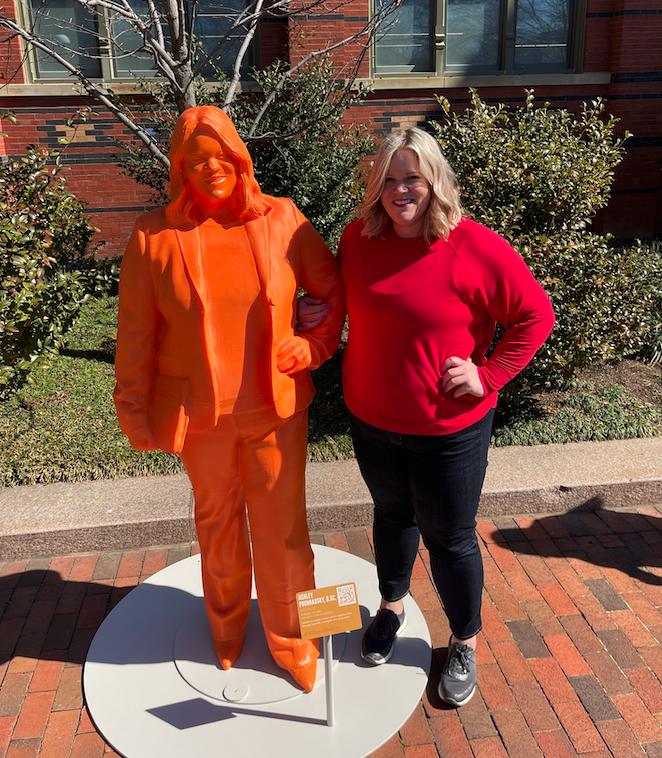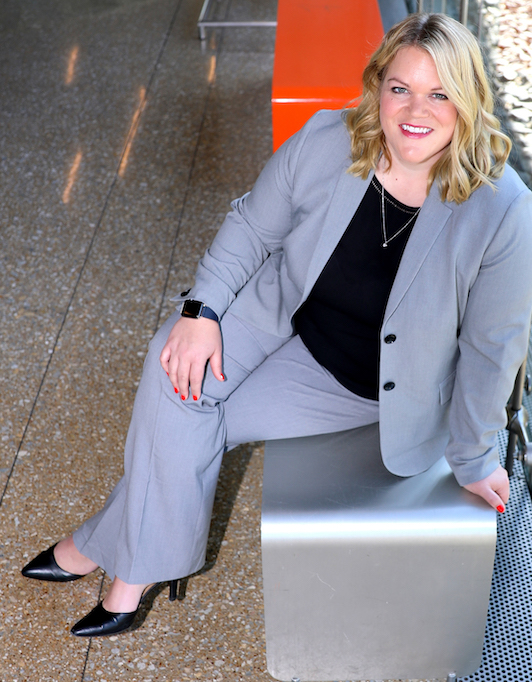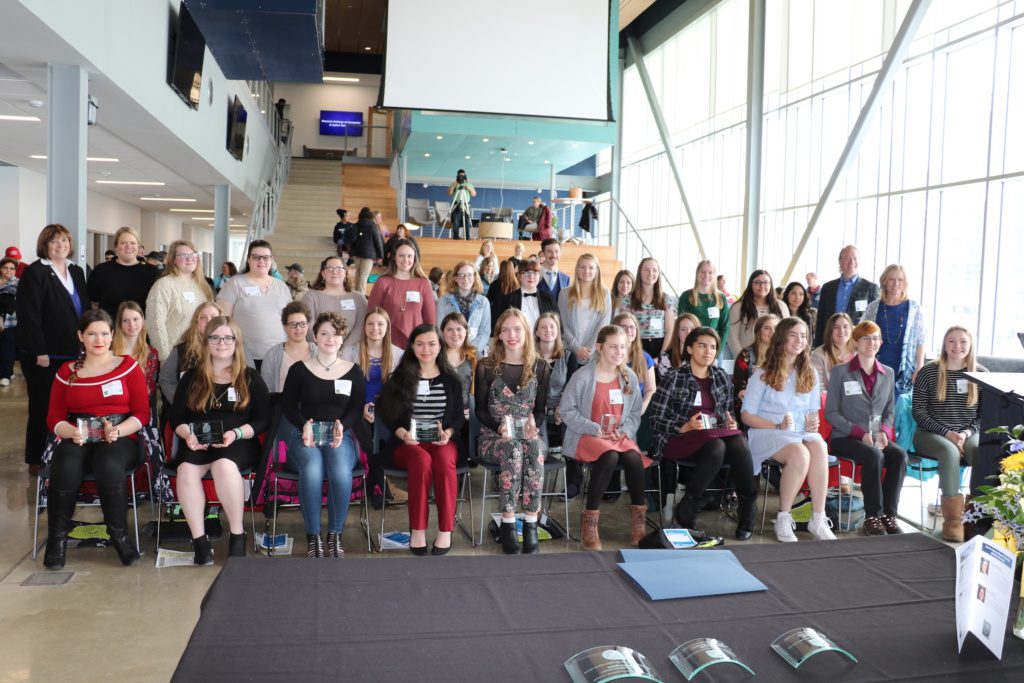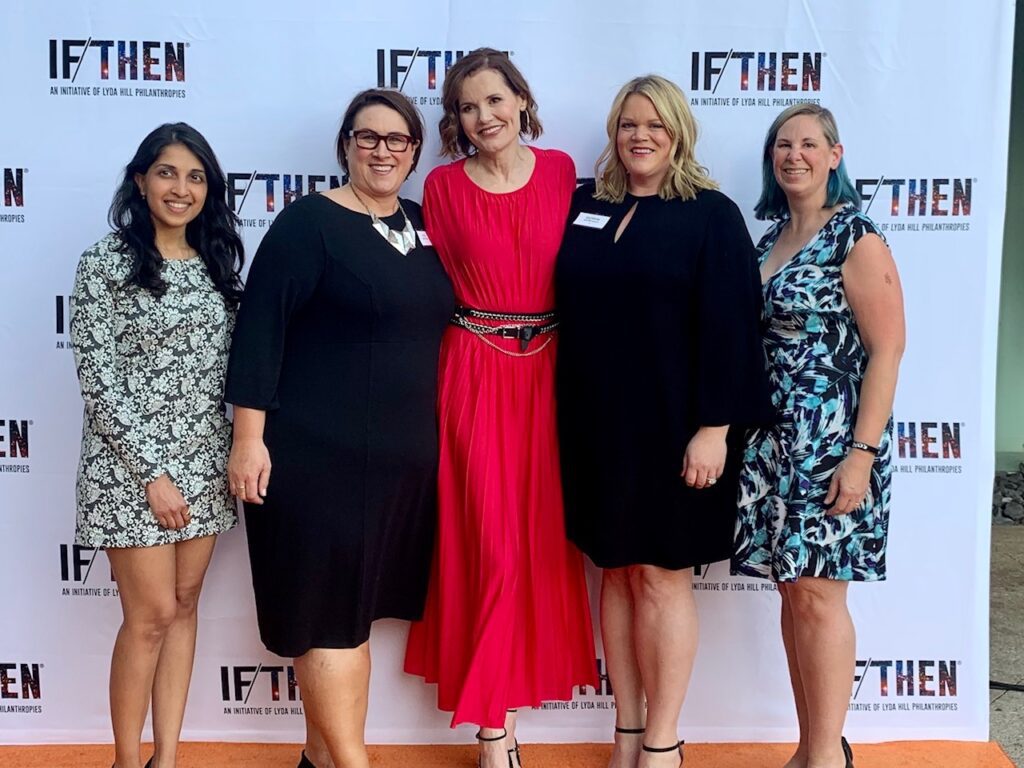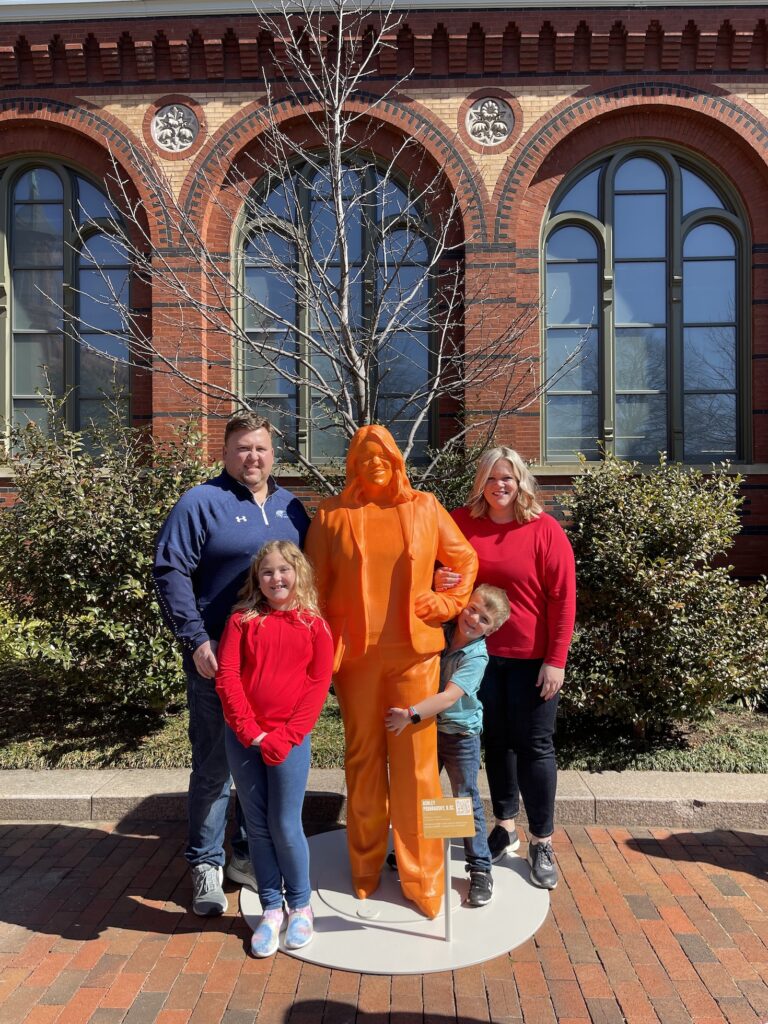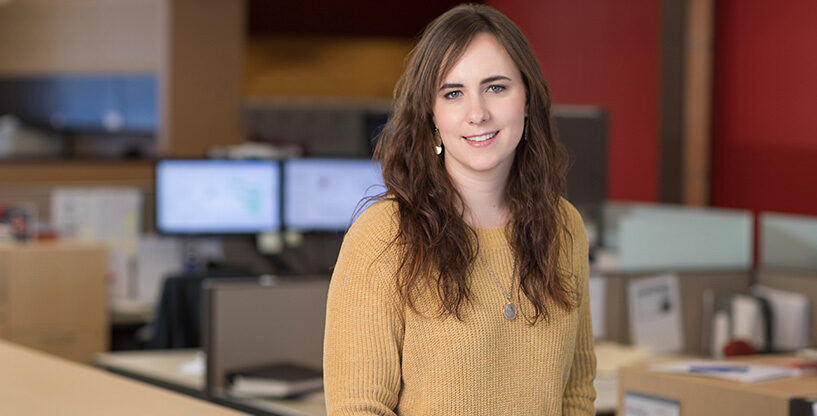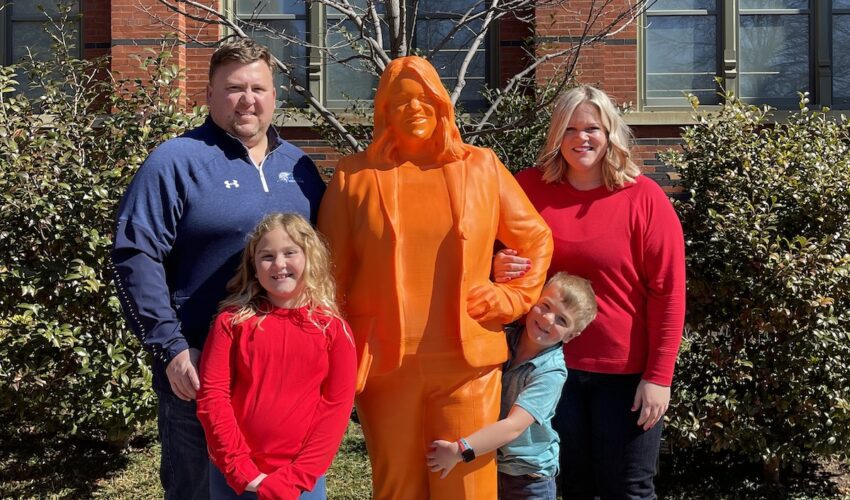Life-size statue lifts up DSU’s leader’s industry-changing work
March 17, 2022
This paid piece is sponsored by South Dakota Biotech.
Imagine seeing yourself in the form of a life-size statue at the Smithsonian Institute.
Ashley Podhradsky doesn’t have to.
Last week, on a trip with her family to Washington, D.C., she was able to link arms with her 3D-printed self in a photo-op that likely only comes around once in a lifetime.
“It’s not anything you aspire for,” Podradsky said. “I think of people like RBG (Supreme Court Justice Ruth Bader Ginsburg) and other trailblazing women when I think of something like that.”
But Podhradsky has been such a trailblazer in her own field of cybersecurity and digital forensics.
Named vice president for research and economic development at Dakota State University in mid-2021 after holding the role on an interim basis, she’s helping lead DSU into an exciting era of cyber work – building on what already has become a career filled with success.
“Ashley Podhradsky is someone who is moving this entire state into the future,” said Joni Ekstrum, executive director of South Dakota Biotech.
“She saw the future years ago and has been cultivating cyber talent here ever since. Those STEM skills translate into so many industries that she literally has helped seed talent in businesses statewide and beyond.”
As fate would have it, Podhradsky grew up in Flandreau, home of former governor and technology advocate Bill Janklow.
“So we had all this new technology in our school,” she said. “The internet was just coming out, and we were learning how we get the internet to our computers, how it works to send messages. So I was exposed to it in school and then realized I could have a career in this. I knew I liked technology, and it was the only choice for me.”
That led her to DSU in nearby Madison, where she earned her bachelor’s, master’s and doctorate with specializations in ecommerce and computer security, information systems with a focus on information assurance and cybersecurity.
“I wanted to go into academia,” she said. “I chose Drexel University in Philadelphia, where I was a tenure-track assistant professor in the college of computing and informatics.”
After a few years, she and her husband, Nick, who also works in a cyber occupation, had the chance to return to South Dakota.
“I was happy to because I’d always known how special DSU is,” Podhradsky said.
When she returned, she was the only woman in her college on the permanent faculty. It wasn’t an unfamiliar role to her.
“When I was a student, I was usually the only woman in the classroom, and when I came back on faculty, I was still the only woman,” she said. “I thought: This has to change. We have to show all these girls exploring careers how great this field truly is.”
In the summer of 2013, she co-founded CybHER, designed to provide education and resources to girls, college students and professionals. It led to numerous programs for girls beginning in kindergarten through high school, along with collegiate mentors and professional support as women entered the field.
“I think there was this perception that girls weren’t interested in the field, simply because they weren’t represented, and we knew if we created something for them we could demonstrate the interest,” Podhradsky said.
“You don’t have to ‘pink’ it and shrink it for girls to be interested in technology. You just have to show them what the field is and more importantly what it’s not. There’s a perception of the hacker in the basement working in isolation, and that couldn’t be farther from the truth.”
The truth is “cybersecurity is a very social environment,” she continued. “You have to have communication and social skills to be successful. In my field of digital forensics, when there’s a cyberattack or hack, I need to understand all the relevant data and be able to communicate what I need to solve the problem.”
What does that look like in a classroom? Podhradsky makes it real.
“I’ll go into a middle school group and show the girls how to crack passwords,” she said. “Not because we’re trying to create a bunch of little hackers, but because we’re trying to demonstrate the importance of choosing secure passwords.”
From there, they estimate how many years current computing power would take to guess the password.
“And they realize with different characters and no dictionary words they can get up to 200 or 250 years,” she said. “So we’ve had an effective conversation about what could have been a boring topic and hopefully gained their interest.”
There’s no question it’s working.
Nationally, women were 8 percent of the cybersecurity field seven years ago. Today, it’s 25 percent.
From the fall of 2012 to the fall of 2019, there was a 595 percent increase in women at DSU studying computer science, cyber operations and network security – from 40 students to more than 180. Odds are, no one is the only woman in the class today.
“I feel good about what we’re doing,” Podhradsky said. “DSU has graduates who are excelling and thriving in cybersecurity who were once campers in our middle school girls GenCyber Camp. It is inspiring to see girls from middle school all the way through to professionals.”
During her time at DSU, she has served as a professor of digital forensics and as associate dean of The Beacom College of Computer and Cyber Sciences.
In her newest role, vice president of research and economic development, she helps faculty and students fund their research and position their projects for success. That includes overseeing the Paulson Cyber Incubator and Entrepreneurial Center.
“I actually enjoy helping my colleagues succeed more than I enjoyed my own individual success,” she said. “And it’s helping me develop a new skill set thanks to a lot of help and mentoring along the way.”
And now, about that statue.
It’s one of 125 honoring STEM industry ambassadors chosen by the American Association for the Advancement of Science.
Displayed for Women’s History Month through March 27 at the Smithsonian Institute, the women featured are those who serve as visible role models to inspire and empower girls considering STEM careers.
“A 2016 study led by former Treasurer of the United States Rosie Rios found that the 10 largest U.S. cities publicly displayed fewer than a half-dozen statues of real women. Now, they just added 125 new statues of real women in STEM,”Podhradsky said.
The installation has been at Central Park in New York City and in Dallas, where Podhradsky visited it last year. Her family came with her to Washington, D.C., where her kids were able to give Mom a hug like no other.
“Seeing the exhibit at the Smithsonian was something I will never forget,” she said.
“I am very thankful for the women that have paved the way for me, and I hope I can help the next generation in the same way. My road hasn’t always been easy, but nothing notable ever is. Without the support of my family, DSU and others, this would not have happened.”
She also spent a day talking with kids and adults touring the exhibit and sharing about the field of digital forensics and cybersecurity along with what DSU is doing in the space.
“It was energizing,” she said.
“My husband, Nick, who has an equally demanding career, has been my biggest supporter and advocate. I am incredibly lucky to have such a supportive spouse. And my kids think it is cool to see ‘Mom’s statue,’ but I don’t know if they truly grasp that this isn’t a common occurrence. I bring them with me when I give big keynotes or have significant accomplishments because I want them to see that they can do absolutely anything. I want them to see that a women on a stage in front of 1,500 people is normal.”
Now that she’s back in South Dakota, she’s focused on creating more cyber partnerships within the state and nation. She’s part of the Governor’s Research Center on Understanding and Disrupting the Illicit Underground Economy and will be helping guide DSU’s applied cybersecurity partnerships.
Podhradsky also serves on the board of South Dakota Biotech and provides an invaluable perspective, Ekstrum said.
“People might hear ‘cybersecurity’ and not immediately connect it with ‘biotech,’ but that’s absolutely what we must do,” Ekstrum said.
“Our ag-related technology, our human health technology and our next-generation energy technology all require a high and evolving level of cybersecurity. These industries have to be operating in lockstep, and Ashley is helping us build the relationships needed to get there.”
That’s critical, Podhradsky agreed.
“Working with Joni is just a pleasure, and we all agree on the need to continue advocating for cybersecurity in our state,” she said.
“You just can’t be in a better place at a better time. At DSU, President Griffiths is just phenomenal, and our faculty are talented. To be able to work with her and see the vision come full circle and support the initiatives, it’s a challenging role, but I enjoy it immensely.”

